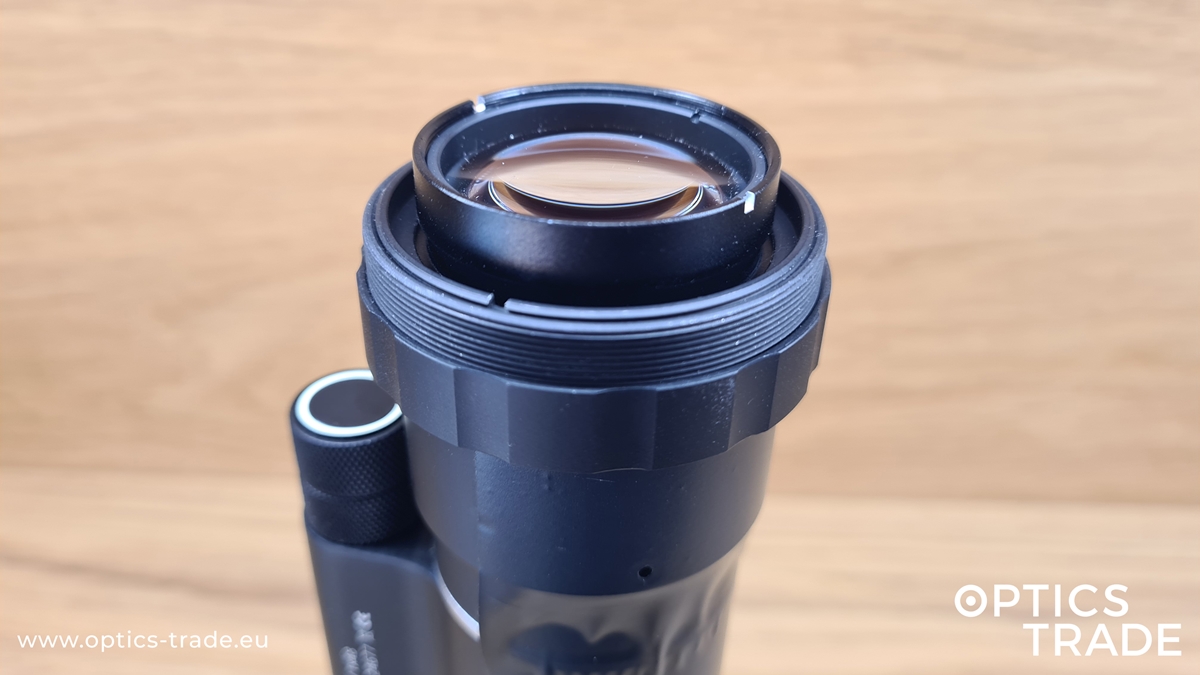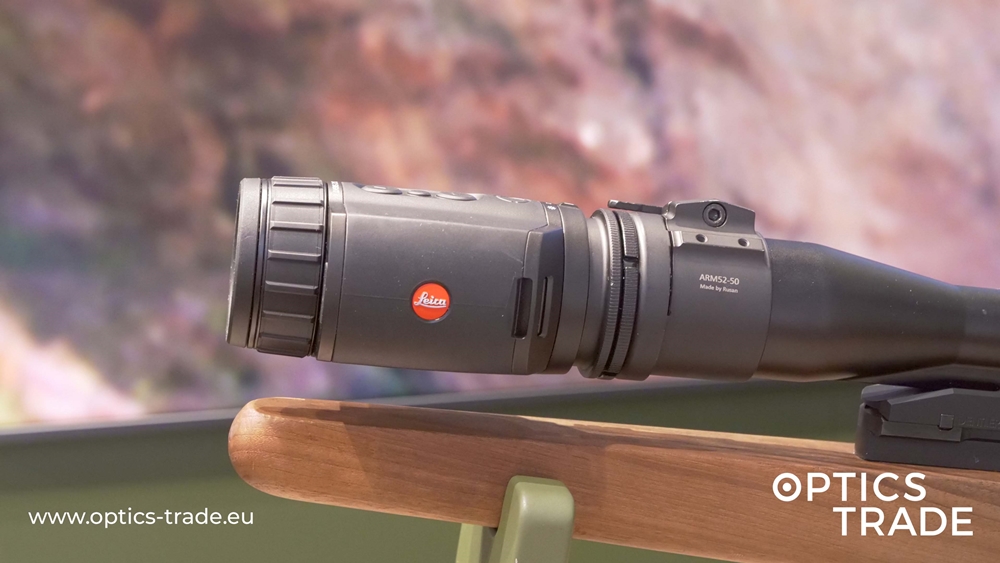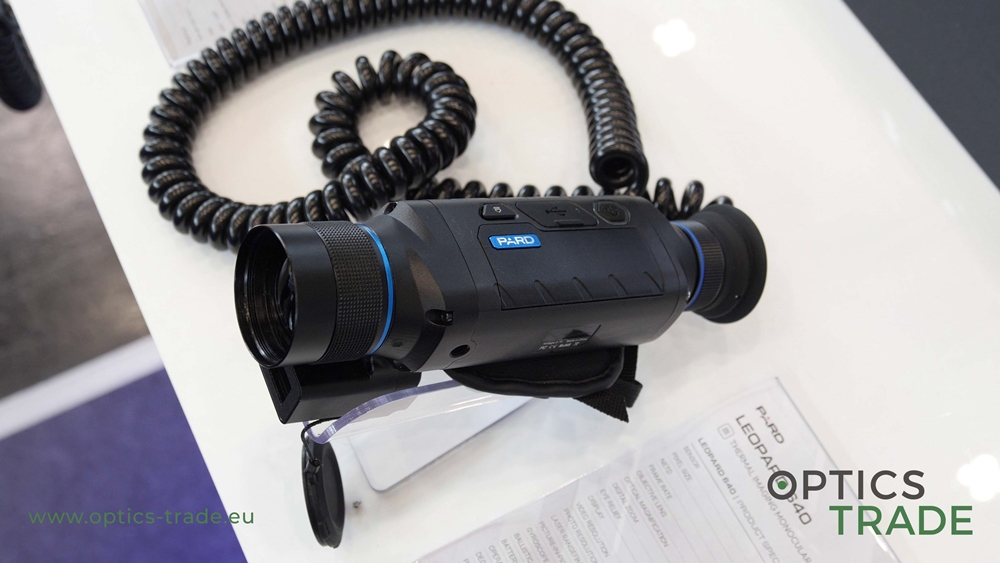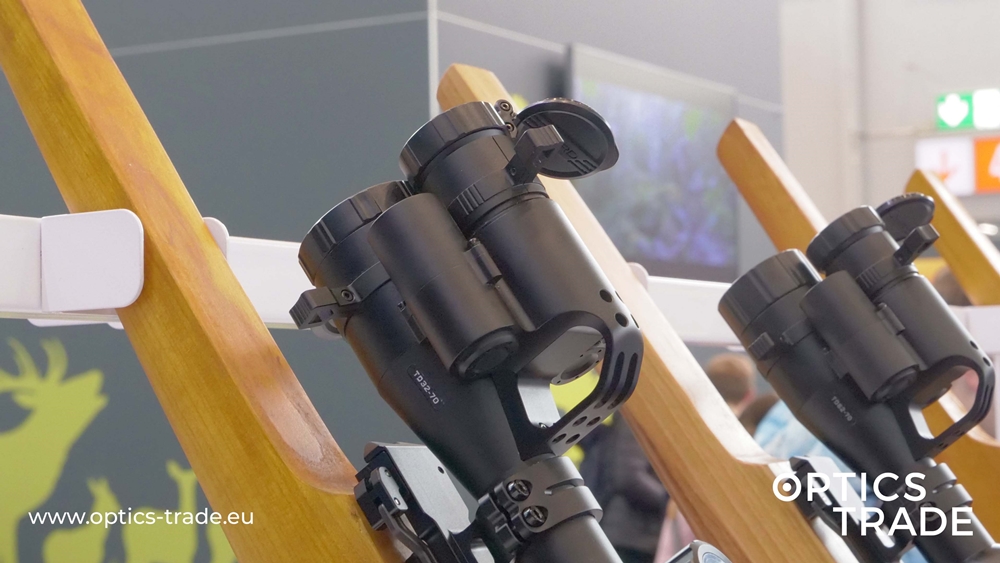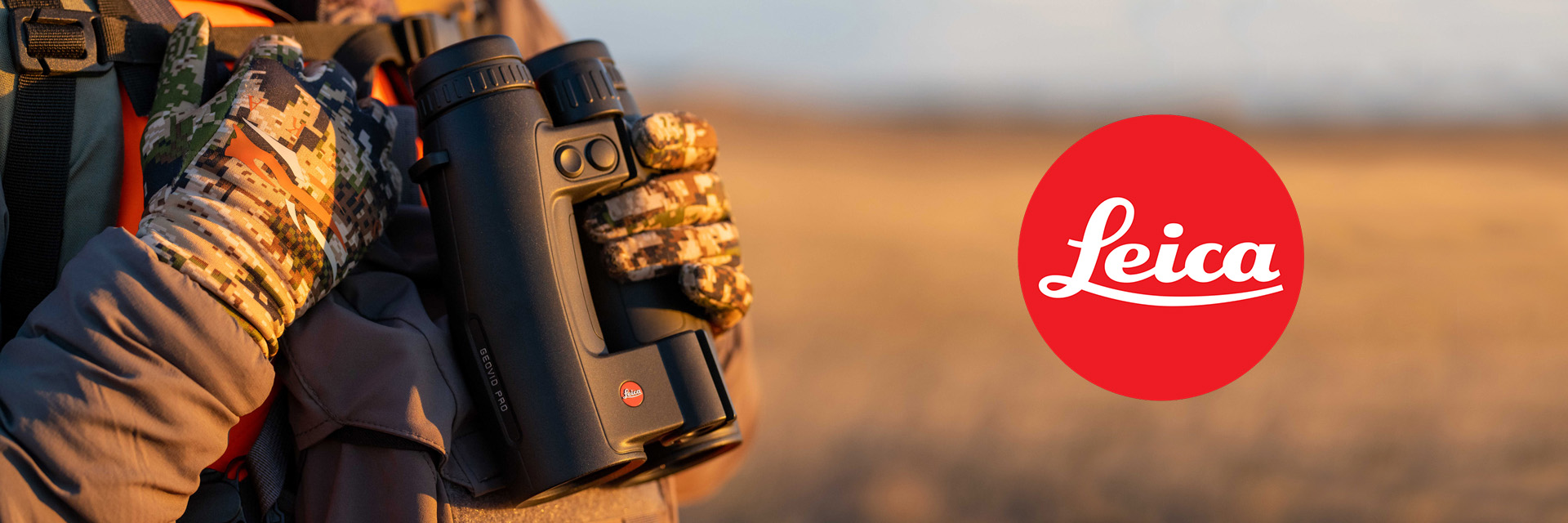Note: This article is updated constantly. Last update: 6 October 2023.
1. Introduction
A clip-on makes it possible for the user to transform a day riflescope into a night-time usable device. Once a suitable clip-on adapter is installed, this can be done in a matter of seconds. The option of quickly switching between both technologies makes such a setup incredibly popular – clip-ons are sold in great numbers and are widely used. The assets of these devices are recognized by hunters, police, the military, and in other fields. Clip-ons are frequently referred to as front and rear attachments, based on whether they are mounted on a riflescope’s objective (front) or eyepiece (rear). Countries in the EU are still not uniform when it comes to the legality of the use of these devices for hunting purposes. The outbreak of swine fever in Europe has caused many countries to alter their laws regarding the use of night vision and thermal technology for hunting because these devices make it easier to control the wild boar population.
- 1. Introduction
- 2. History of clip-on devices
- 3. Rear-mounted clip-ons
- 4. Front-mounted clip-ons
- 5. Technology in clip-on devices
- 6. Pros of clip-on devices
- 7. Front Clip-on adapter mounting standards
- 7.1 Scope mounting standards of front-mounted clip-ons
- 7.1.1 Dedal mounting standard (M52x0.75)
- 7.1.2 Dipol mounting standard (M49x0.75)
- Mounting possibilities for Dipol standard
- 7.1.3 Meopta Meonight 1.1 mounting standard (M46x0.75)
- 7.1.4 Swarovski TM 35 mounting standard (M44x0.75)
- 7.1.5 Night Pearl mounting standard (M43x0.75)
- 7.1.6 Armasight mounting standard (M39x1.0)
- 7.1.7 Pulsar Krypton mounting standard (M35x1.0)
- 7.1.8 Guide mounting standard (M33.5×0.75)
- 7.1.9. Infiray CTP13 mounting standard (M30x1.0)
- 7.1.10 Hikmicro Thunder mounting standard (bayonet)
- 7.1.11 Pulsar DFA75 mounting standard (bayonet)
- 7.1.12 Pulsar Forward mounting standard (bayonet)
- 7.2 Rail mounting standards of front-mounted clip-ons
- 7.1 Scope mounting standards of front-mounted clip-ons
- 8. Rear clip-on adapter mounting standards
- 9. Conclusion
- 10. List of all NV and thermal devices
2. History of clip-on devices
The evolution of technology that is based on infrared light is almost a hundred years old. The military was the first to use night vision and thermal devices. Gradually, their assets have been recognized in other fields. Hunters started to notice that certain game, such as wild boars, red deer, and most predators, does not come into the open until night falls, rendering daytime optics useless. This led to the introduction of night vision and thermal devices in the field of hunting, which changed the hunting market for good. The first companies to produce NV and thermal devices for the civilian market were Dedal, Pulsar, and Dipol. Over the years, the performance of these devices has improved immensely.
3. Rear-mounted clip-ons
These are mounted on a riflescope’s eyepiece (at the rear), which is why they are often called rear (rearward) clip-on devices. They are quite scarce, only a few manufacturers produce them. For safety reasons, it is not recommended to pair rear clip-on devices with hard-kicking rifles. The most important parameter to know before purchasing the correct adapter is the eyepiece diameter of the riflescope.


3.1 Unusual forms of rear clip-on adapters
For the adapters to fit some of the riflescopes on the market, adapter manufacturers must make certain adjustments to them. Swarovski Z6i and Z8i riflescopes, for example, have the illumination adjustment knob on the eyepiece. For PARD NV007 devices to be mounted on these riflescopes, the adapter must be designed so that it grips the illumination compartment along with the eyepiece.
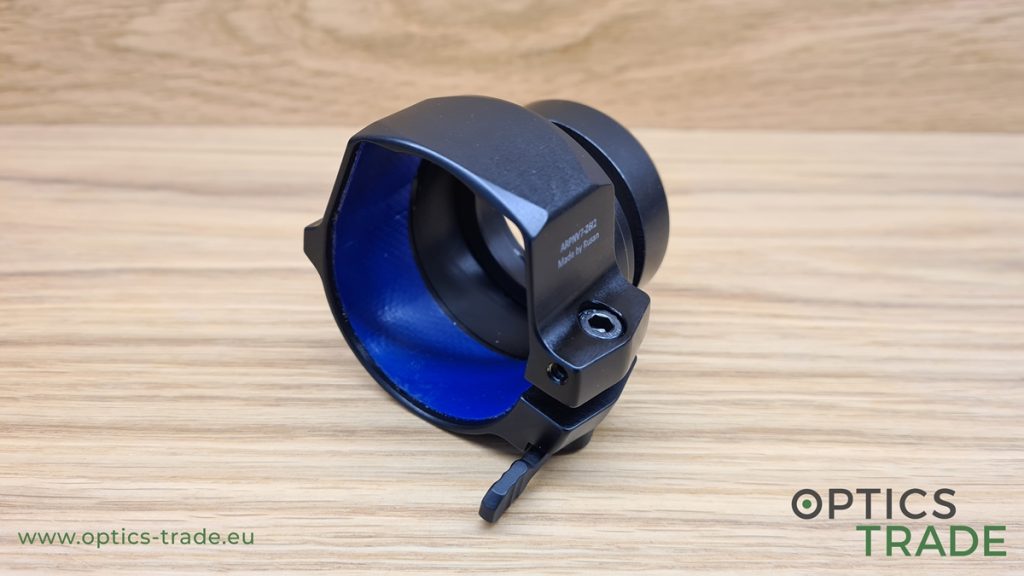
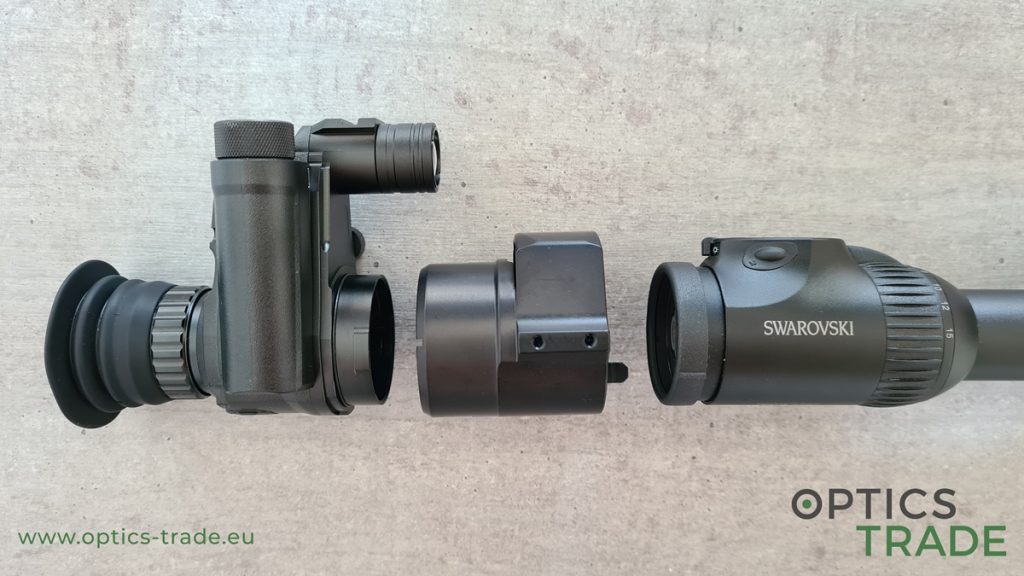

4. Front-mounted clip-ons
These are mounted in front of the riflescope, either on the riflescope’s objective (front scope-mounted clip-ons), or on the rail in front of the riflescope’s objective (front rail-mounted clip-ons). They are often collectively referred to as front (forward) clip-on devices.
4.1 Front rail-mounted clip-ons
These clip-ons are mounted on a Picatinny rail in front of the riflescope. Most of the rail-mounted adapters available on the market are quite long, so you need a rifle with a Picatinny flat top to mount them. Only a few adapters on the market are shorter, taking up a shorter section of the Picatinny rail. Examples of rifles with a Picatinny flat top are Steyr SSG M1 and CZ 600 Trail. The first front-mounted clip-ons were all mounted this way until objective mounting became a more popular choice. Certain manufacturers are switching back to the rail-mounting option because there is no stress on the scope.

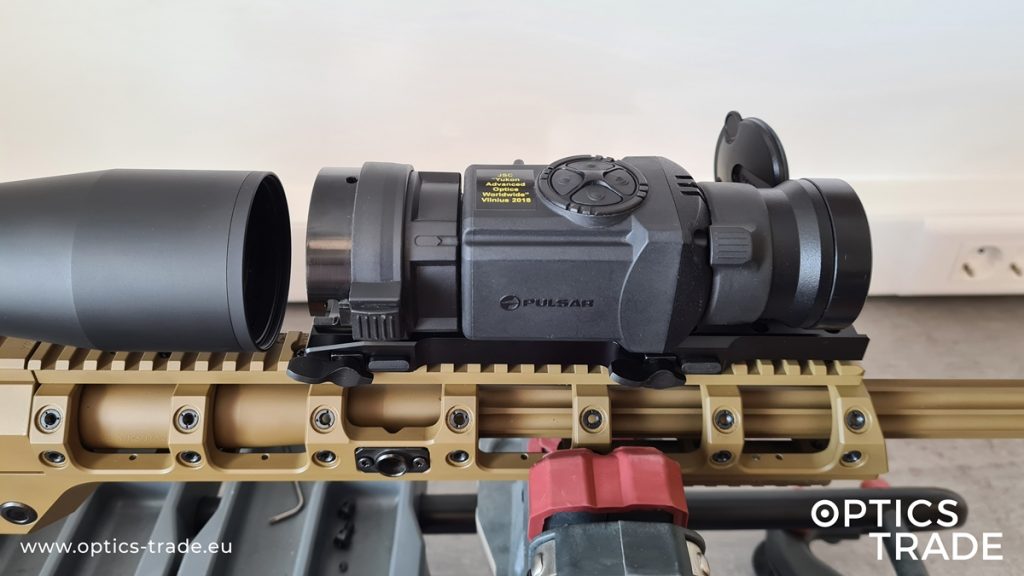

Certain adapters designed for clip-on rail mounting take up a smaller portion of the Picatinny rail when mounted. Pulsar’s PSP-V adapter for Pulsar Krypton is a great example.

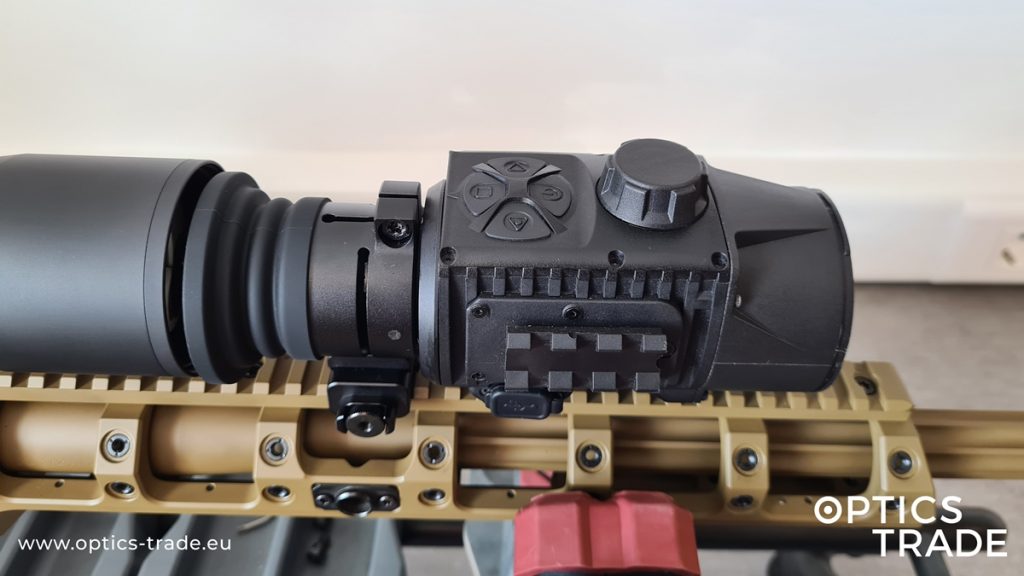

4.2 Front scope-mounted clip-ons
These clip-ons are mounted on the riflescope’s objective, meaning that you need a suitable adapter to pair a riflescope with the clip-on. It is necessary to know the outer objective diameter of the scope when purchasing an adapter
4.2.1 Mounting a front scope-mounted clip-on with a single-piece adapter (a one-piece mounting solution)
Some clip-ons can be mounted on a riflescope’s objective with a single-piece adapter. Most adapter manufacturers make adapters for the M52x0.75 mounting standard in all possible objective diameter values. Clip-ons that use this mounting standard can be paired with a riflescope directly, without an additional reducing ring. Furthermore, adapter manufacturers produce single-piece adapters for certain mounting standards (Pulsar Forward mounting standard, for example) in combination with the most common outer objective diameter values (50 mm, 56 mm, 62 mm). Producers of thermal optics sometimes also offer single-piece adapters for the mounting standard that they use on their devices.
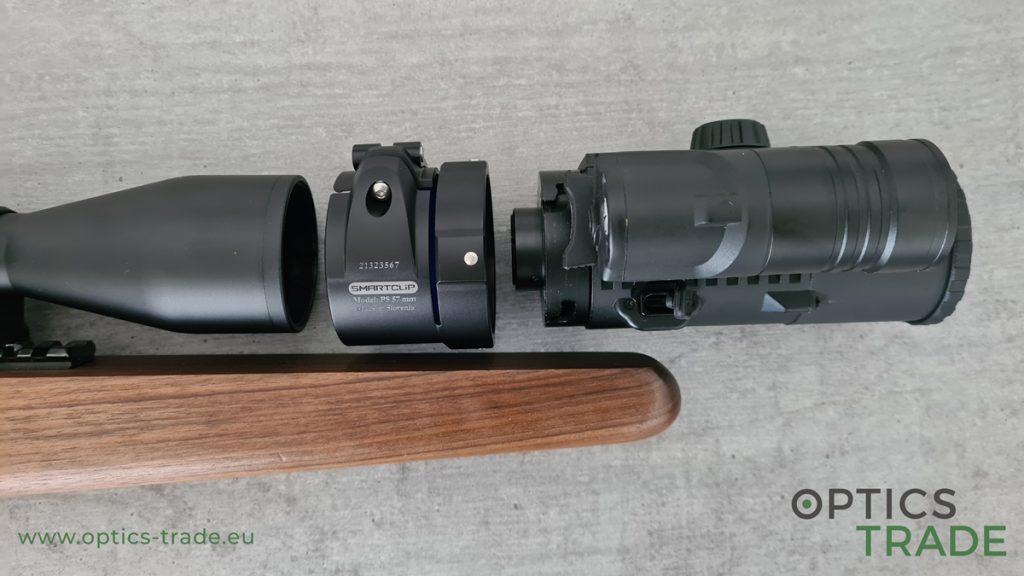
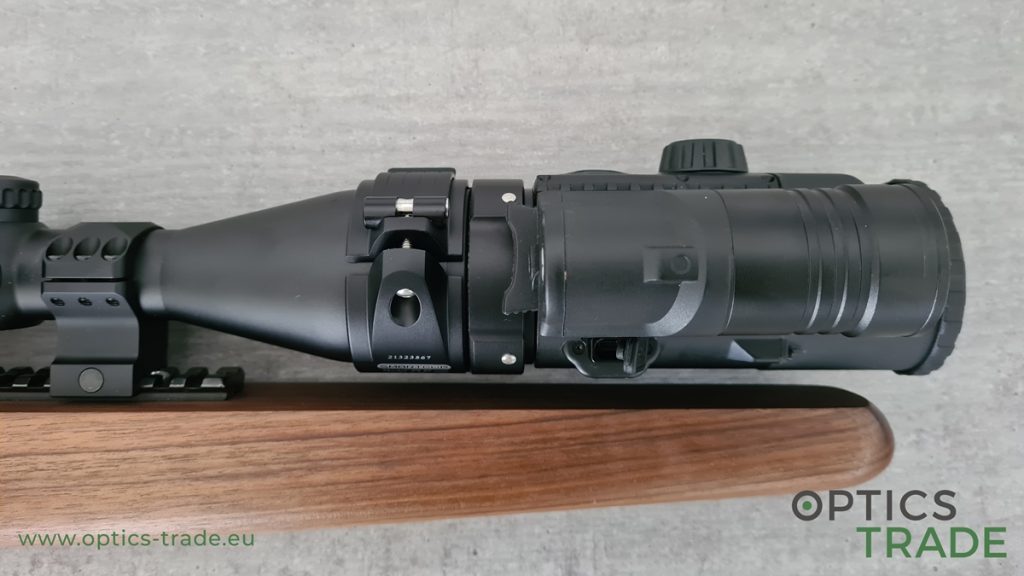
4.2.2 Mounting a front scope-mounted clip-on with an adapter and a reducing ring (a two-piece mounting solution)
Not all adapters are made of a single piece. In some cases, a reducing ring is needed to pair a riflescope with a clip-on. It is placed between the adapter and the clip-on to convert the mounting standard on the adapter (usually M52x0.75) to the one on the clip-on. A two-piece mounting solution is the only option with rarer clip-on mounting standards and/or unconventional objective diameter values. Below, you can see a reducing ring used that converts the M52x0.75 mounting standard on the adapter to the M35x1.0 mounting standard on the clip-on Pulsar Proton.


4.2.3 Differences between the one-piece and two-piece mounting solution
People often ask if the one-piece mounting solution is superior to the two-piece mounting solution. The answer is no. There is no difference between the two options in terms of robustness and recoilproofness – a combination of an adapter and a reducing ring is just as sturdy as the one-piece adapter mounting solution.
4.3 Add-ons on front clip-on adapters
Some adapters provide the user with an option of mounting accessories on the surface of the adapter. Rusan modular adapter, for example, allows the mounting of a Picatinny rail on its surface. Users can mount useful accessories such as a an illuminator or a power bank on the rail.
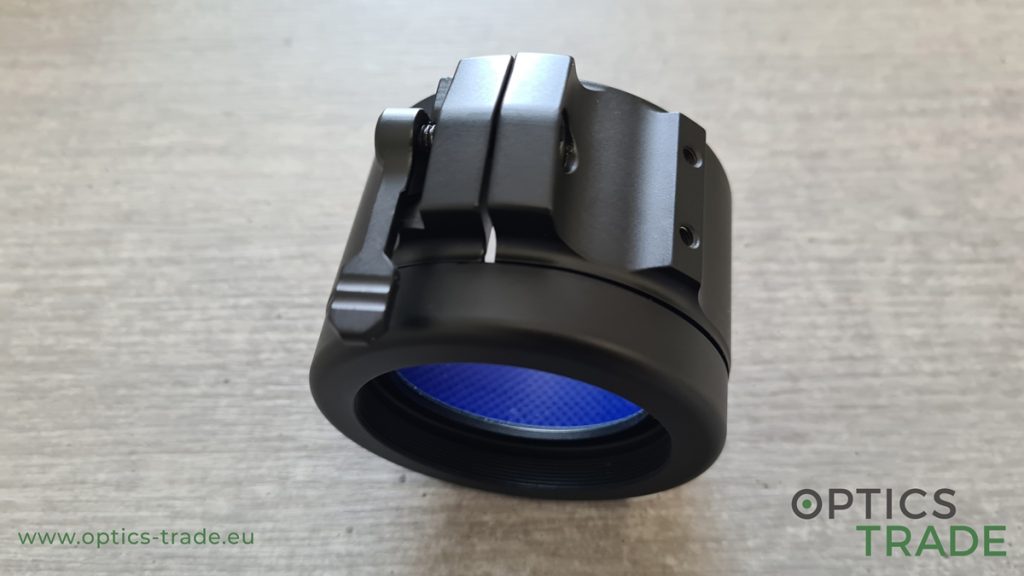
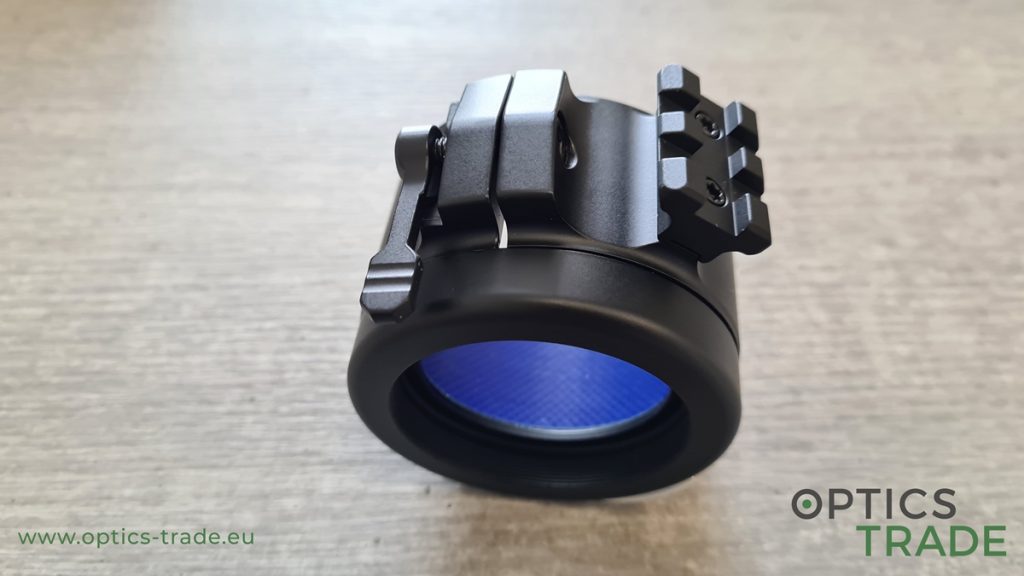


5. Technology in clip-on devices
There are two main types of clip-on devices – night vision and thermal. Night vision devices are further divided into analog and digital night vision devices.
5.1 Analog night vision
Analog night vision devices feature a light-sensitive surface called a photocathode. When photons, fundamental particles of light, strike this surface, they are converted into electrons. After electrons are multiplied by a photomultiplier, they hit a phosphor screen, creating tiny flashes of light, visible to the human eye. Based on their ability of light enhancement, analog night vision devices are divided into generations 1–3. 1st generation devices are affordable but obsolete, whereas those of generations 2, 2+, 3, and 3+ are much more expensive. Analog night vision devices generally work best with illuminators that emit light with a wavelength of around 850 nm (the most expensive ones are an exception as they even work with illuminators that emit light with a wavelength above 900 nm).
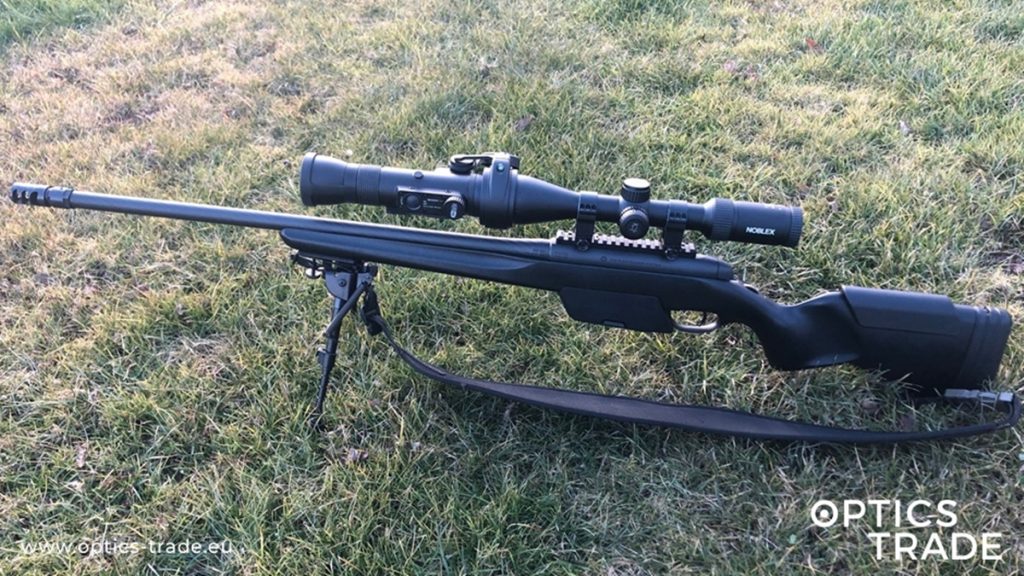
5.2 Digital night vision
Digital night vision devices work differently. They are equipped with a sensor that converts light into electrical signals. The signal travels via various converters to the screen, where it is converted into light, visible to the human eye. The better the resolution and sensitivity of the sensor, the better the image quality. These devices work best with illuminators that emit light with a wavelength of 915–940 nm.
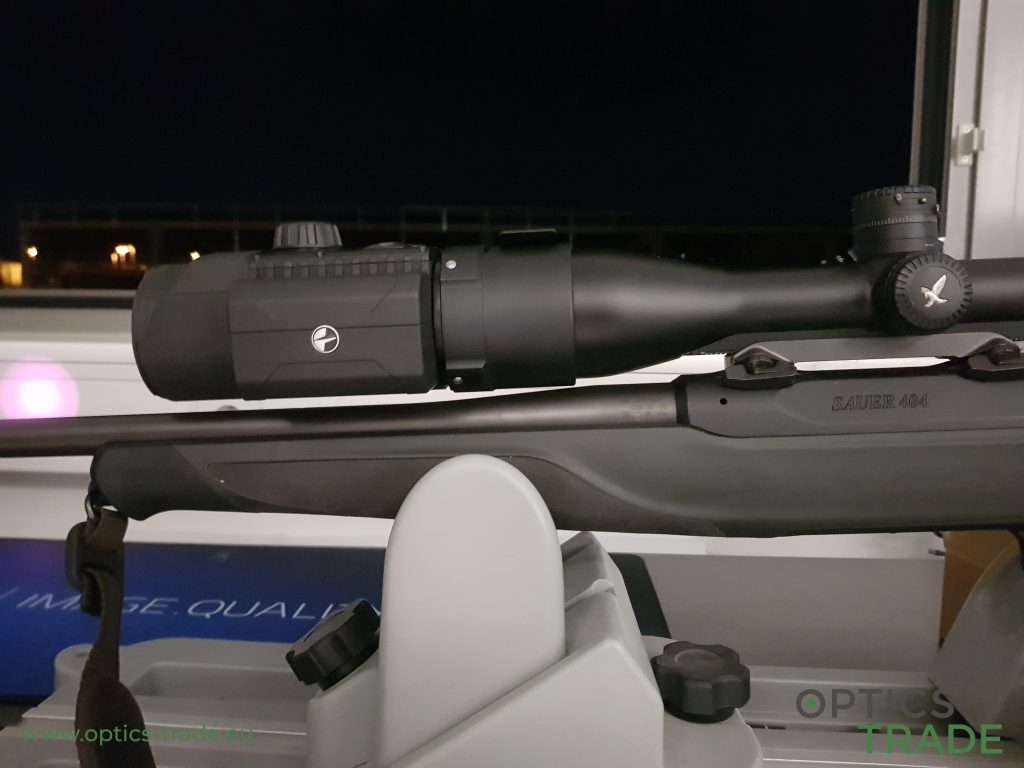
5.3 Thermal
Thermal devices do not need any light to function, which is why they are not equipped with an infrared illuminator. The sensor of the device detects infrared radiation which is emitted by the objects around us. The warmer the object, the stronger the radiation. The detectors on the sensor measure the temperature of the radiation – the information is converted into electrical signals. These are transferred to the screen of the device and converted to the corresponding colour, visible to the human eye.

6. Pros of clip-on devices
Clip-on devices are often compared with stand-alone NV and thermal riflescopes in terms of usability. Even though the latter have many advantages, clip-ons boast some features that should not be overlooked.
6.1 Better day performance of optics
With a clip-on mounted on a riflescope, hunters are prepared for both day and night hunting since you can install or remove the clip-on device in a matter of seconds. Use the riflescope for clear vision during the day, and pair it with a clip-on to see during the night. NV and thermal riflescopes cannot outperform standard riflescopes during daytime yet.
6.2 Better eye relief
This applies to front attachments only. Rear clip-ons, naturally, are an exception to this as they are mounted on a riflescope’s eyepiece. Standard riflescopes have better eye relief when compared to NV and thermal ones, which is why a combination of a riflescope and front clip-on attachment provides better eye relief than a night vision or thermal riflescope. This is especially useful when the NV and thermal technology are used on a hard-kicking rifle.
Notes
Please note that there might be some errors in the following list. Even though we strive to check the mounting standard on each device in person, it is difficult to obtain all of them (some are quite rare, some are long discontinued, etc.) With some devices, we relied on the information provided by either the adapter manufacturer or the clip-on manufacturer. If you find any errors or would like to make a contribution yourself, e-mail me at [email protected]
7. Front Clip-on adapter mounting standards
7.1 Scope mounting standards of front-mounted clip-ons
7.1.1 Dedal mounting standard (M52x0.75)
This mounting standard was first used on Dedal 540. Many other NV and thermal device manufacturers have used it since. Because it has been so frequently used throughout the years, most adapters are designed to fit directly on it, without the use of additional reducing rings (converters). Reducing rings are generally used to convert this mounting standard to any other.
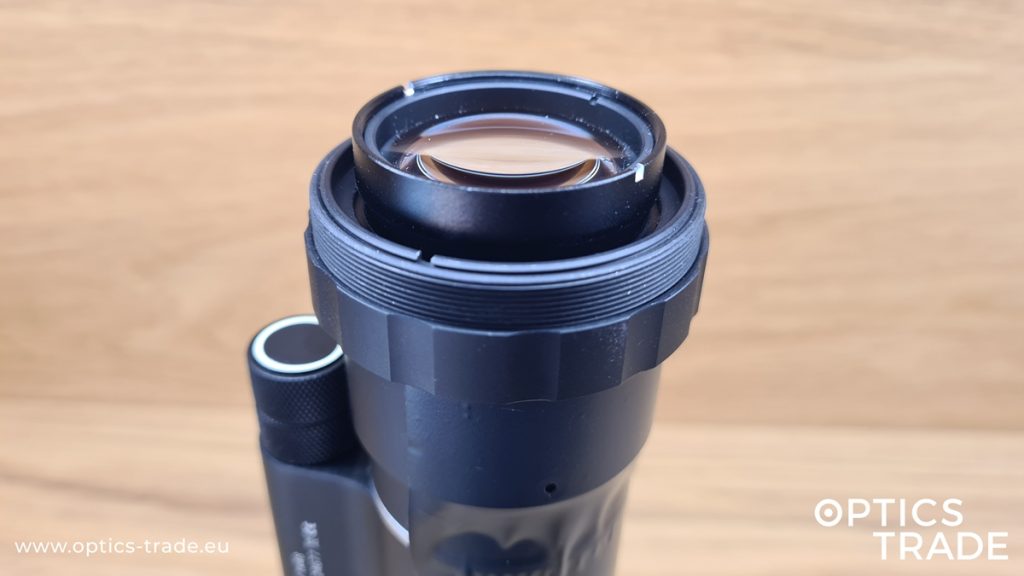

Clip-ons that share this mounting standard:
Mounting possibilities for Dedal standard
Notes
With Smartclip, Rusan and Recknagel adapters, choose the size based on the outer objective diameter of your riflescope.
Our list of riflescopes and their outer objective diameters is available
7.1.2 Dipol mounting standard (M49x0.75)
Dipol was the first to use this standard. Their adapters fit directly onto the thread. With other adapter manufacturers such as Rusan and Smartclip, a reducing ring (converter) is needed.

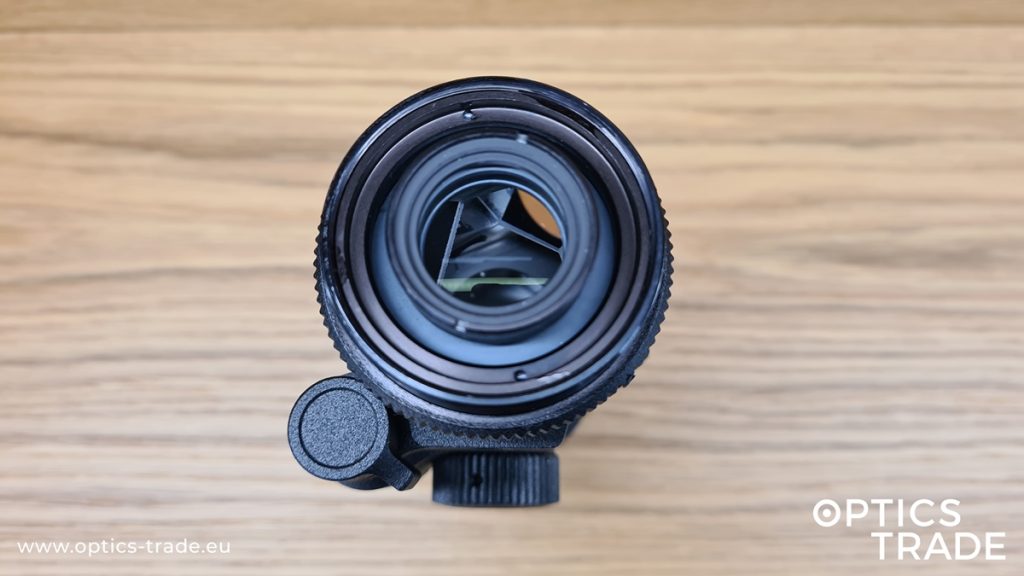
Clip-ons that share this mounting standard:
Mounting possibilities for Dipol standard
Notes
With Smartclip, Rusan and Recknagel adapters, choose the size based on the outer objective diameter of your riflescope.
Our list of riflescopes and their outer objective diameters is available
Rusan reducing ring for the Dipol mounting standard (M49x0.75) can be paired with Rusan, Smartclip and Recknagel adapter for the M52x0.75 mounting standard.
7.1.3 Meopta Meonight 1.1 mounting standard (M46x0.75)
Meopta uses this mounting standard on their Meonight 1.1 analog night vision clip-on. It is also used by some other well-known night vision and thermal optics manufacturers such as Lahoux. The adapters made for this standard often combine a M52x0.75 adapter and a M46x0.75 reducing ring (converter).
Clip-ons that share this mounting standard:
Mounting possibilities for Meopta Meonight 1.1 standard
Notes
With Smartclip, Rusan and Recknagel adapters, choose the size based on the outer objective diameter of your riflescope.
Our list of riflescopes and their outer objective diameters is available
Rusan reducing ring for the Meopta Meonight mounting standard (M46x0.75) can be paired with Rusan, Smartclip and Recknagel adapter for the M52x0.75 mounting standard.
7.1.4 Swarovski TM 35 mounting standard (M44x0.75)
Swarovski was the first to use this mounting standard on their TM35. There are both options of mounting it with an adapter and using a combination of an adapter and a reducing ring.

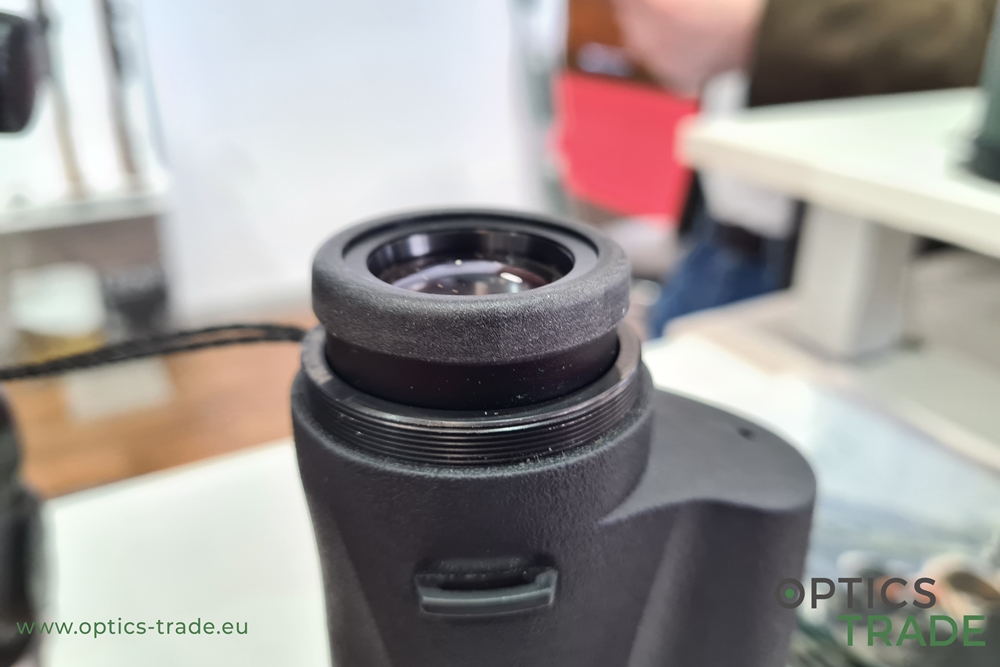
Clip-ons that share this mounting standard:
Mounting possibilities for Swarovski TM35 standard
Notes
With Smartclip, Rusan and Recknagel adapters, choose the size based on the outer objective diameter of your riflescope.
Our list of riflescopes and their outer objective diameters is available
7.1.5 Night Pearl mounting standard (M43x0.75)
This mounting standard is used on certain Night Pearl and Liemke devices.

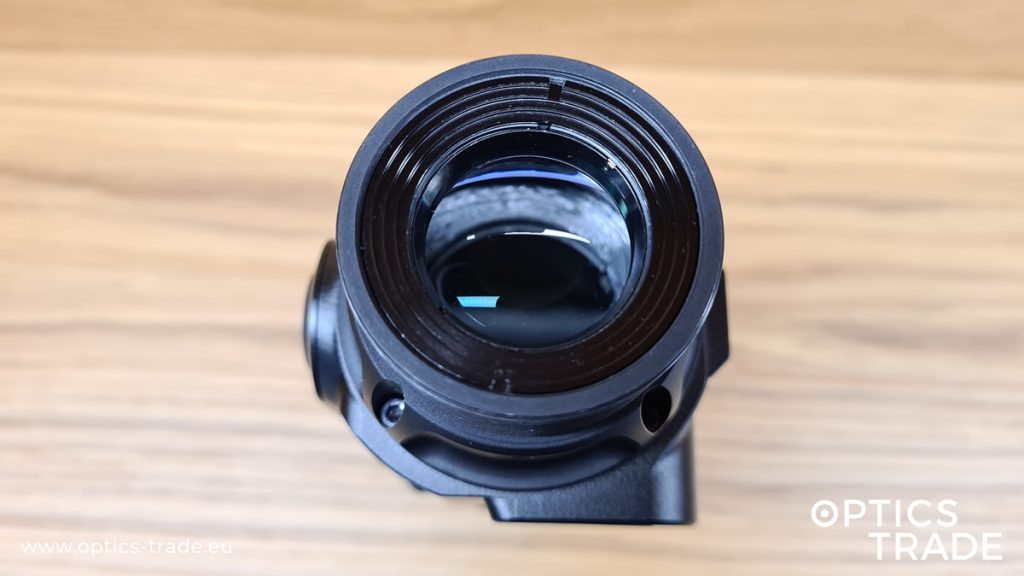
Clip-ons that share this mounting standard:
Mounting possibilities for Night Pearl standard
Notes
With Smartclip, Rusan and Recknagel adapters, choose the size based on the outer objective diameter of your riflescope.
Our list of riflescopes and their outer objective diameters is available
Rusan reducing ring for the Night Pearl mounting standard (M43x0.75) can be paired with Rusan, Smartclip and Recknagel adapter for the M52x0.75 mounting standard.
7.1.6 Armasight mounting standard (M39x1.0)
This mounting standard is used predominantly on Armasight clip-on devices. As it is quite rare, there are no single-piece mounting solutions on the market. Commonly, a M52x0.75 adapter is combined with a M39x1.0 reducing ring (converter).
Clip-ons that share this mounting standard:
Mounting possibilities for Armasight standard
Notes
With Smartclip, Rusan and Recknagel adapters, choose the size based on the outer objective diameter of your riflescope.
Our list of riflescopes and their outer objective diameters is available
Rusan reducing ring for the Armasight mounting standard (M39x1.0) can be paired with Rusan, Smartclip and Recknagel adapter for the M52x0.75 mounting standard.
7.1.7 Pulsar Krypton mounting standard (M35x1.0)
We first noticed this mounting standard on Pulsar Krypton, hence we named the standard after this device. Pulsar manufactures an adapter that fits directly on this mounting standard, whereas other adapter manufacturers mostly offer a combination of an adapter and a reducing ring.
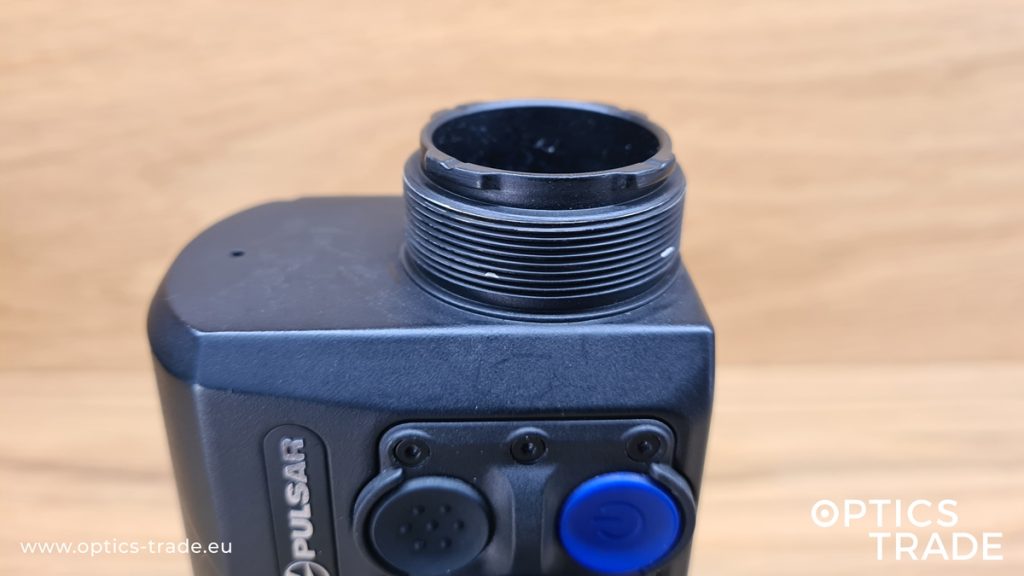

Clip-ons that share this mounting standard:
Mounting possibilities for Krypton standard
Notes
With Smartclip, Rusan and Recknagel adapters, choose the size based on the outer objective diameter of your riflescope.
Our list of riflescopes and their outer objective diameters is available
Rusan reducing ring for the Krypton mounting standard (M35x1.0) can be paired with Rusan, Smartclip and Recknagel adapter for the M52x0.75 mounting standard.
7.1.8 Guide mounting standard (M33.5×0.75)
Guide was the first company to use this mounting standard. Generally, a combination of an adapter and a reducing ring is needed to mount a clip-on with this mounting standard on a riflescope.
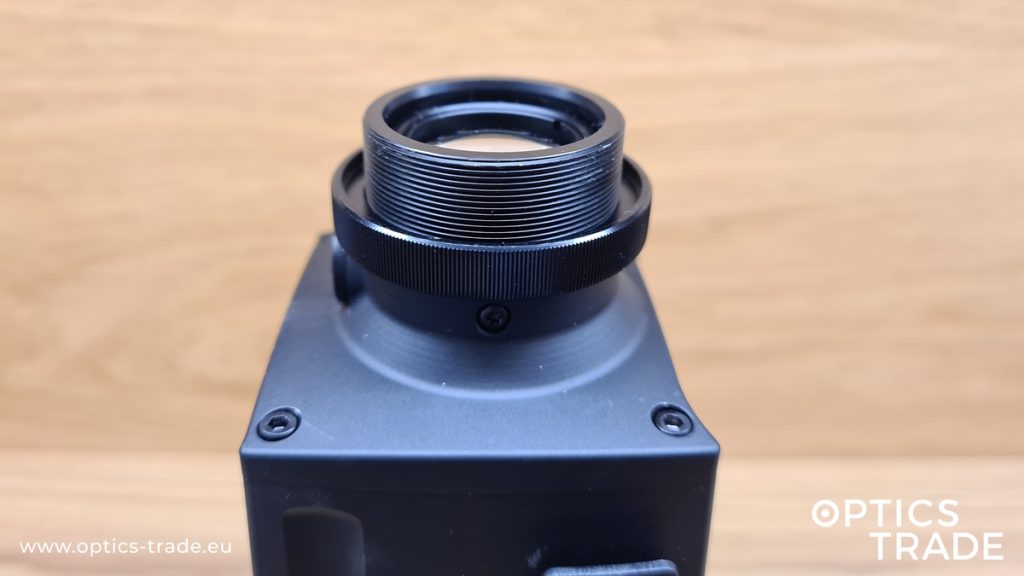
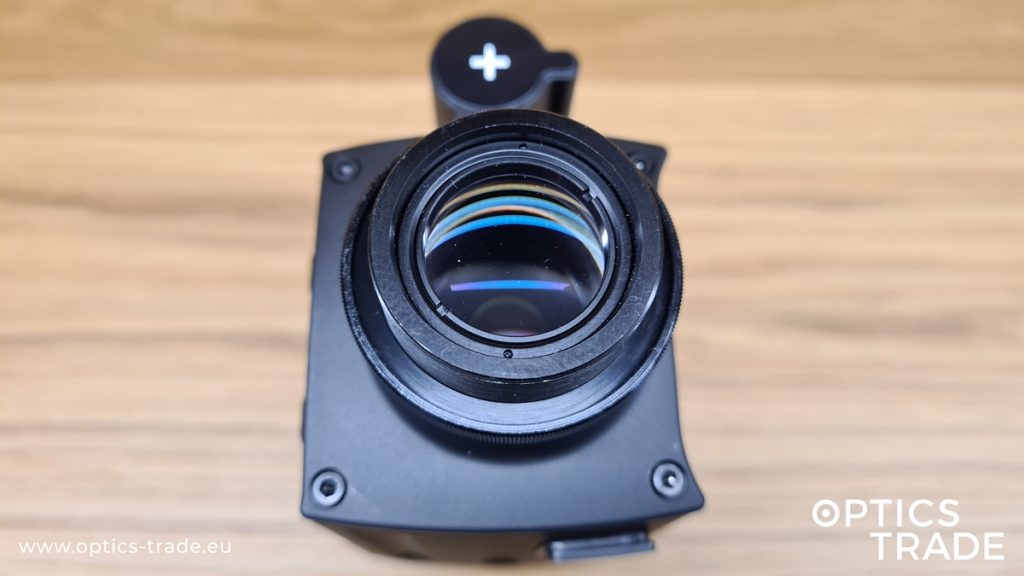
Clip-ons that share this mounting standard:
Mounting possibilities for Guide standard
Notes
With Smartclip, Rusan and Recknagel adapters, choose the size based on the outer objective diameter of your riflescope.
Our list of riflescopes and their outer objective diameters is available
Rusan reducing ring for the Guide standard can be paired with Rusan, Smartclip and Recknagel adapter for the M52x0.75 mounting standard.
7.1.9. Infiray CTP13 mounting standard (M30x1.0)
We first noticed this thread-type mounting standard on Infiray CTP13. It is found on compact clip-ons. Usually, a converter from M30x1.0 to M52x0.75 is supplied with the device, hence there are not so many aftermarket adapters available. The ones that are available are two-piece versions.

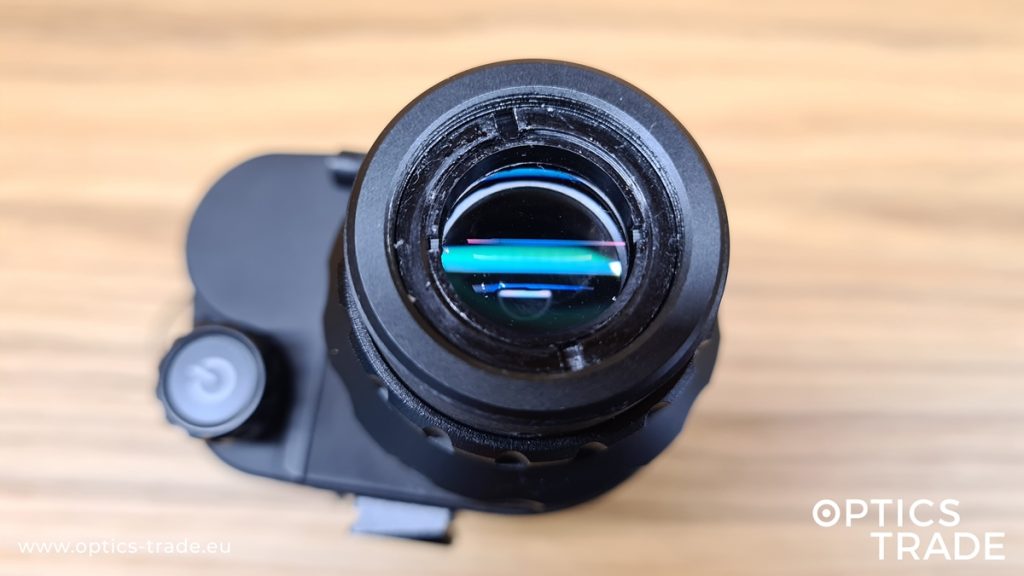
Clip-ons that share this mounting standard:
Mounting possibilities for Infiray CTP13 standard
7.1.10 Hikmicro Thunder mounting standard (bayonet)
Hikmicro designed this bayonet-style mounting standard and uses it on their Thunder clip-on devices. To mount a device with this mounting standard on a riflescope, you need a combination of an appropriate adapter and reducing ring.

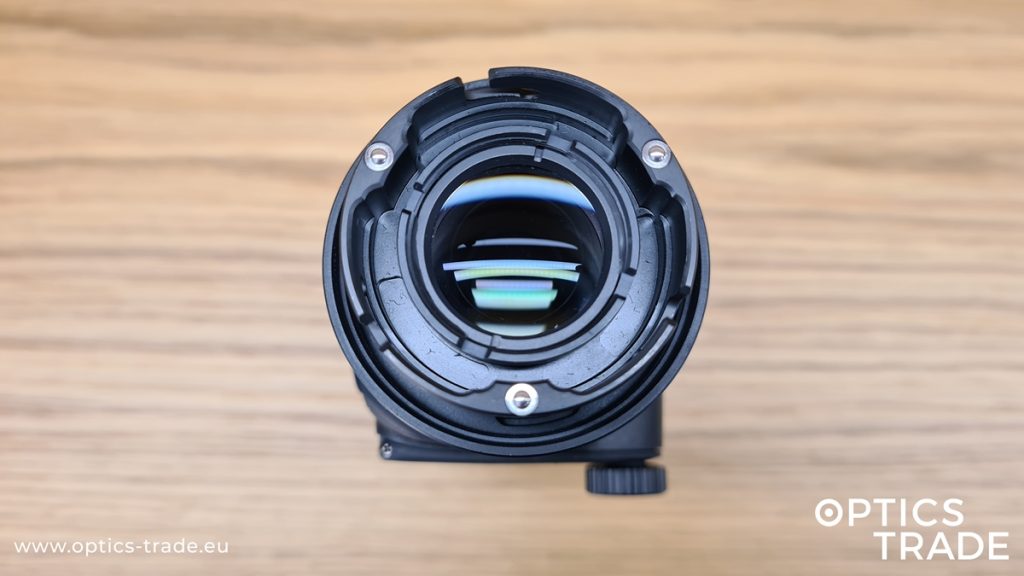
Clip-ons that share this mounting standard:
Mounting possibilities for Hikmicro Thunder standard
Notes
With Smartclip, Rusan and Recknagel adapters, choose the size based on the outer objective diameter of your riflescope.
Our list of riflescopes and their outer objective diameters is available
Rusan reducing ring for the Hikmicro standard can be paired with Rusan, Smartclip and Recknagel adapter for the M52x0.75 mounting standard.
7.1.11 Pulsar DFA75 mounting standard (bayonet)
This mounting standard was first used on Pulsar DN55 and DFA75 devices. It is similar to the Pulsar Forward standard but the bayonet consists of two notches instead of four. Once the adapter pins are inserted into the notches, they have to be turned counterclockwise for the adapter to be fixed in place. Some manufacturers offer adapters that can be placed directly on the bayonet, while a reducing ring is needed with others.


Clip-ons that share this mounting standard:
Mounting possibilities for Pulsar DFA75 standard
Notes
With Smartclip, Rusan and Recknagel adapters, choose the size based on the outer objective diameter of your riflescope.
Our list of riflescopes and their outer objective diameters is available
Rusan reducing ring for the Pulsar DFA75 standard can be paired with Rusan, Smartclip and Recknagel adapter for the M52x0.75 mounting standard.
7.1.12 Pulsar Forward mounting standard (bayonet)
This mounting standard was first used on Pulsar Forward F135 and F155. The bayonet is similar to the one found on Pulsar DFA75 and Core devices but features four notches instead of two. Some manufacturers offer adapters that can be placed directly on the bayonet, while a reducing ring is needed with others.
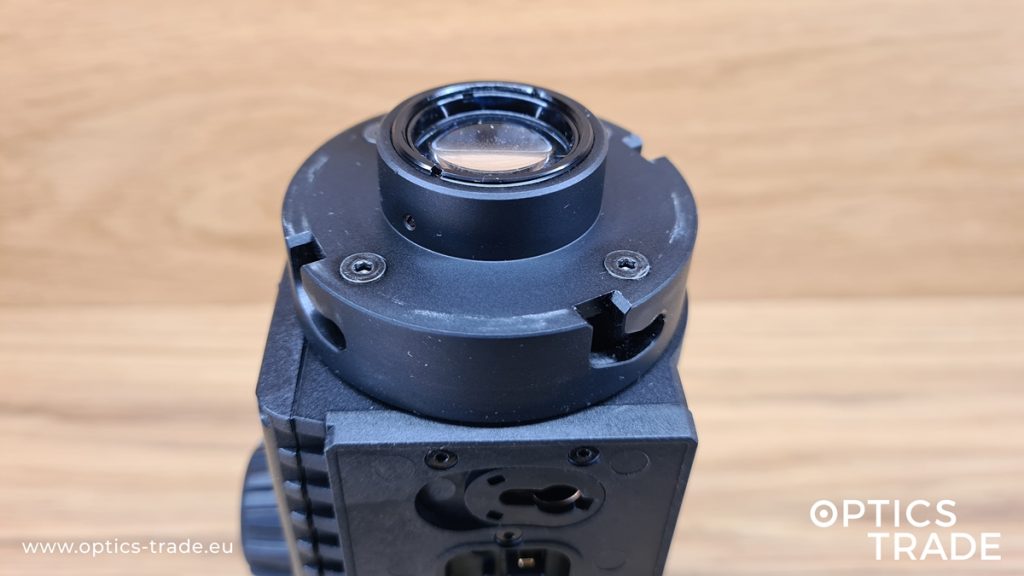

Clip-ons that share this mounting standard:
Mounting possibilities for Pulsar Forward standard

Notes
With Smartclip, Rusan and Recknagel adapters, choose the size based on the outer objective diameter of your riflescope.
Our list of riflescopes and their outer objective diameters is available
Rusan reducing ring for the Pulsar Forward standard can be paired with Rusan, Smartclip and Recknagel adapter for the M52x0.75 mounting standard.
7.2 Rail mounting standards of front-mounted clip-ons
7.2.1 Hikmicro Thunder rail mounting standard
Hikmicro utilizes this specification for all their first-generation Thunder devices, clip-ons and riflescopes. It includes two screw holes with a distance of 29 mm from center to center, and a thread size of 1/4″ – 20.


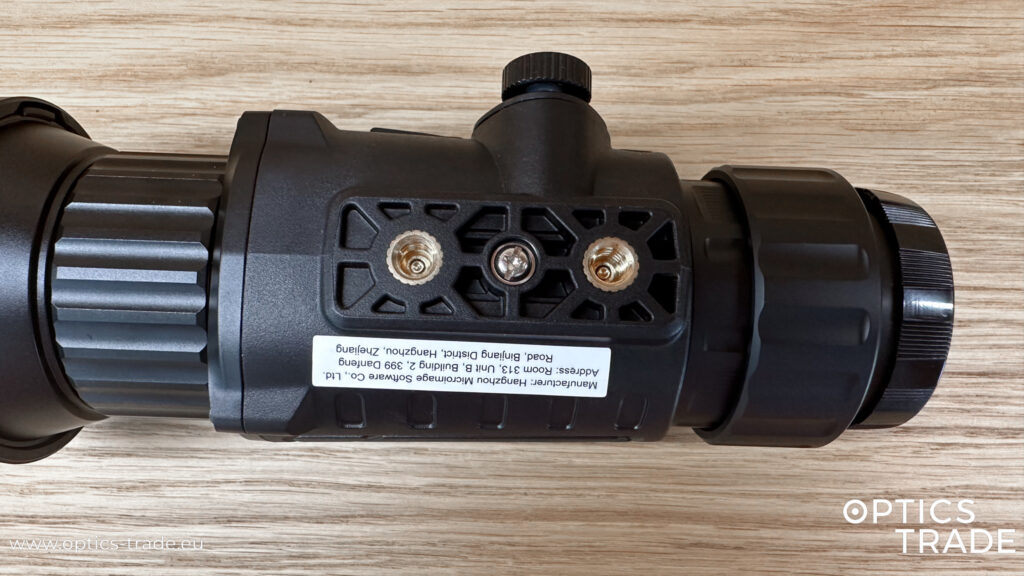
Clip-ons that share this rail mounting standard:
Mounting possibilities for Pulsar Forward standard
7.2.2 Pulsar Core rail mounting standard
The Pulsar Core rail mounting standard is an adaptation of the Pulsar Trail mounting system, seen in many of Pulsar’s discontinued thermal riflescopes. While the Trail system incorporates four screw holes, the Pulsar Core standard features just two, with the same M6 thread size. Mounts designed for the Pulsar Trail standard can be used for the Pulsar Core standard as well, with an added degree of flexibility (the device can be mounted on any of the two adjacent holes on the mount).

Clip-ons that share this rail mounting standard:
| Clip-On Device | Product | Details |
|---|---|---|
| Pulsar Core FXQ38 | Discontinued | |
| Pulsar Core FXQ50 | Discontinued |
Mounting possibilities for Pulsar Core mounting standard
7.2.3 Infiray CML rail mounting standard
The Infiray CML mounting standard is present on compact clip-ons. This system features two screw holes, spaced 19.2 mm from center to center, with an M3 thread size.


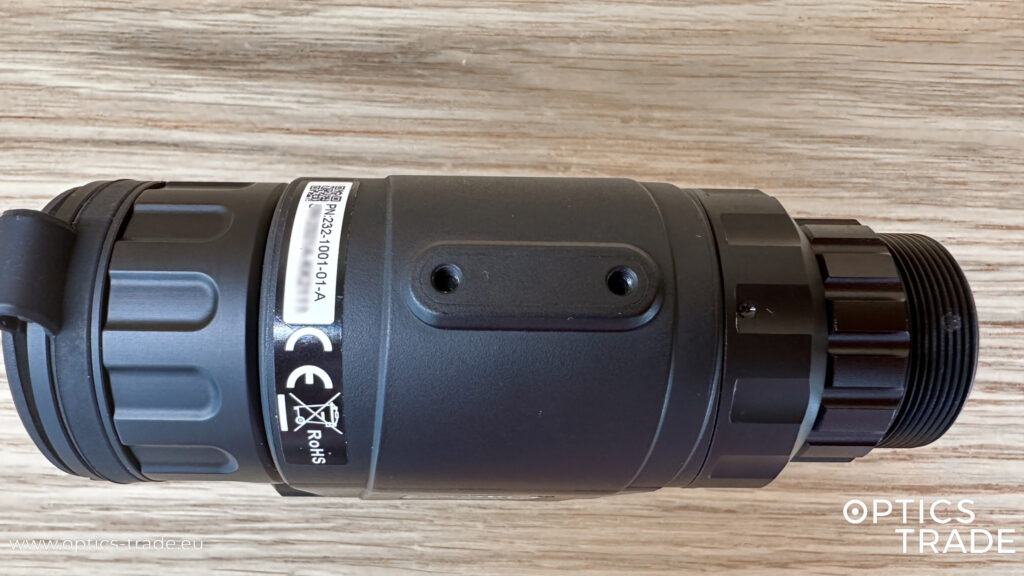
Clip-ons that share this rail mounting standard:
| Thermal Riflescope | Product | Details |
|---|---|---|
| Infiray CML 25 | ||
| Liemke Merlin 19 | ||
| Liemke Merlin 25 |
Mounting possibilities for Infiray CML mounting standard
8. Rear clip-on adapter mounting standards
8.1 Pard NV007 standard (bayonet)
The first device to feature this standard was Pard’s NV007. Adapters on the market fit directly onto the bayonet. No reducing rings are needed.
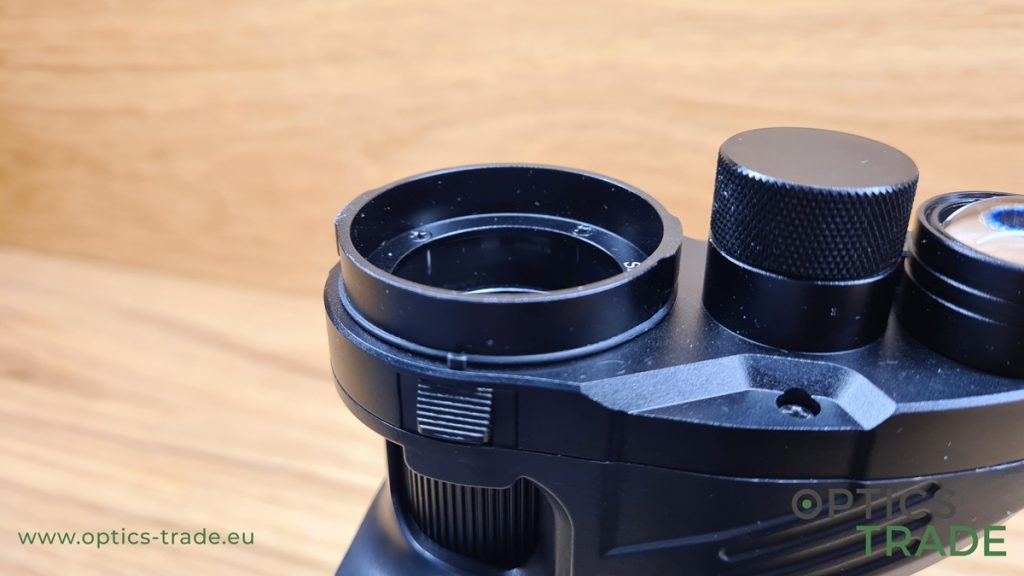
Clip-ons that share this mounting standard:
Mounting possibilities for Pard NV007 standard
8.2 Pard NV007S standard (bayonet)
Pard’s NV007S was the first device to feature this mounting standard. Adapters on the market fit directly onto the bayonet. No reducing rings are needed.
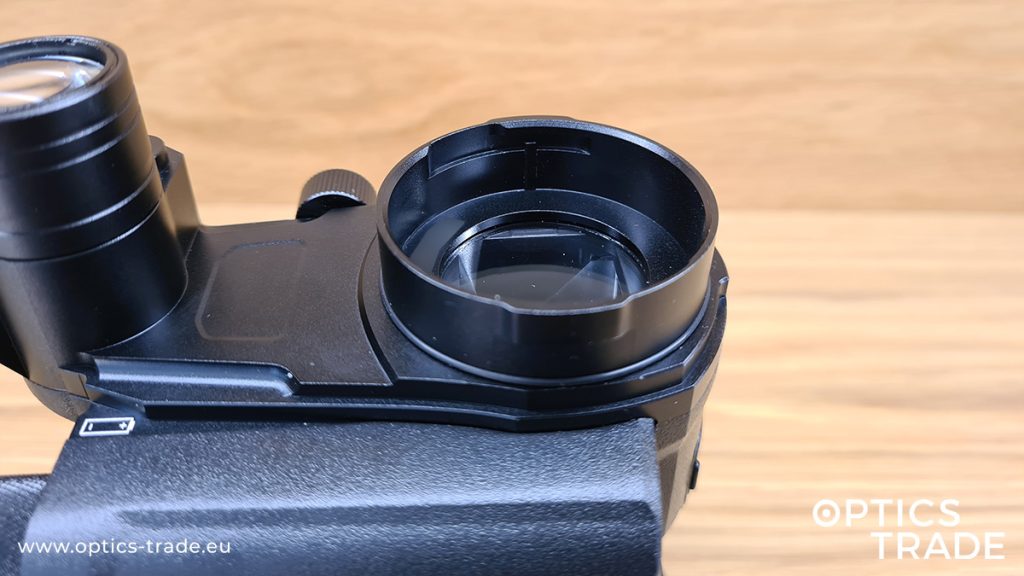

Clip-ons that share this mounting standard:
Mounting possibilities for Pard NV007S standard
8.3 Pard NV007SP mounting standard
Even though the bayonet on the NV007SP is similar to the one on NV007S, the adapters designed for NV007S do not fit properly on the bayonet of NV007SP.

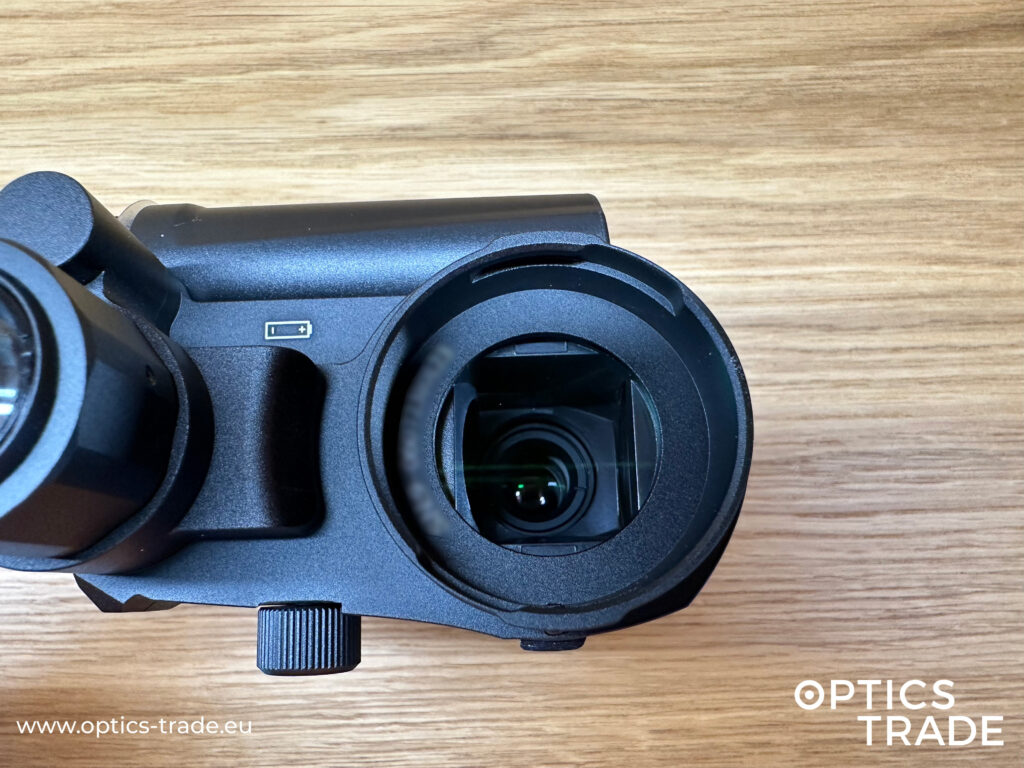
Clip-ons that share this mounting standard:
9. Conclusion
If you have an NV or thermal clip-on attachment that is not listed in this article, or if you have found any error, please send an e-mail to [email protected] – help us expand our database. We greatly appreciate everyone’s help!
This article is regularly updated with new information and user contributions. We aim to create a collection of useful data that will be of great help to users and potential buyers of NV and thermal clip-ons, and those who are looking for a specific adapter for their thermal & NV device.
10. List of all NV and thermal devices
